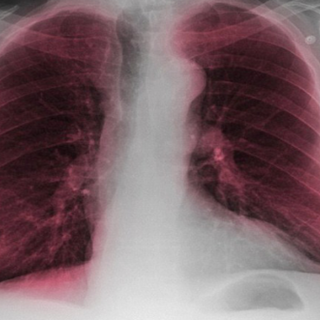
Everything You Need to Know About Hepatitis B
We have all the tools to completely eradicate the serious liver infection, yet millions continue to die from it.

The case of Hepatitis B is a strange one. Here’s a common liver infection that can become chronic and even fatal if not diagnosed and treated in a timely manner. But we have all the tools to fight it: routine detection and monitoring tests before and after the diagnosis of Hepatitis B, a vaccine we developed four decades ago to prevent its occurrence, and medications to manage and treat the infection in those who develop it. In fact, the World Health Organization calls it the disease we can completely eradicate off the face of this Earth.
Yet, according to the WHO, as of 2015, 257 million people were living with chronic Hepatitis B; 887,000 died that year of liver cirrhosis (scarring) and primary liver cancer caused by the Hepatitis B virus. A lack of advocacy, political will, and access to correct information are the culprits behind this: As of 2016, only 10.5% of all people living with Hepatitis B were aware of their infection. Only 16.7% of those diagnosed were on treatment, according to the WHO.
In an effort to bridge the information gap, here’s everything you need to know about Hepatitis B.
What is Hepatitis B?
Hepatitis B is the most common, serious liver infection in the world; it is caused by the Hepatitis B virus. The virus spreads through blood and other body fluids, and attacks liver cells. This causes infection and inflammation, which can lead to liver failure, cirrhosis (scarring) or cancer of the liver.
How is Hepatitis B diagnosed?
There are a number of blood tests to diagnose and monitor people with Hepatitis B, which primarily focus on detecting the Hepatitis B surface antigen, HBsAg, a toxic substance on the surface of the virus that prompts the immune system to produce antibodies to fight the infection.
These tests are also used to distinguish between the two types of Hepatitis B infections:
- Acute Hepatitis B infection: This is characterized by the presence of HBsAg and immunoglobulin M (IgM) antibody to the core antigen, HBcAg. During the initial phase of infection, patients also test positive for the antigen, HBeAg. HBeAg usually indicates a high level of replication of the virus, signifying that the blood and bodily fluids of that person are highly infectious.
- Chronic Hepatitis B infection: This is characterized by the persistence of HBsAg for at least six months. It is the principal marker of risk for developing chronic liver disease and liver cancer as a complication later in life. ‘
The likelihood that an acute infection becomes chronic depends on the age at which the infection is contracted. According to the WHO,80-90% of infants who are infected with Hepatitis B within the first year of life; 30%-50% of children infected before the age of 6; and, fewer than 5% of otherwise healthy adults who become infected …go on to develop chronic Hepatitis B. Of these adults, 20%-30% develop cirrhosis and/or liver cancer.
How is Hepatitis B transmitted?
Hepatitis B spreads in three primary ways: at birth, from an infected mother to the child (if the child is not immediately vaccinated); through direct contact with infected blood (sharing tattoo/piercing/IV drug needles and unsafe injections); and through unprotected sex.
Since infection in infancy leads to chronic Hepatitis B in about 80-90% of cases, it is most common in newborns infected from their mothers.
The virus can survive outside the human body for at least seven days. This means, during this period, the virus can still cause infection if it enters the body of an uninfected or unvaccinated person.
Related on The Swaddle:
What Parents Should Know About Hepatitis Vaccines
While sharing items such as shaving razors, toothbrushes and earrings can also lead to the spreading of Hepatitis B — and therefore, can technically spread by living in a household with an infected person — the virus is NOT spread by sharing utensils, food or water with an infected individual. It also does not spread through coughing or sneezing, breastfeeding, hugging, kissing, holding hands, or through insects that bite.
Adults are also at a higher risk of getting infected if they adopt a child from a country where Hepatitis B is prevalent, have ever been diagnosed with a sexually transmitted disease, are a recipient of organ donation or are on kidney dialysis.
Medical professionals can be at risk if they reuse medical equipment, don’t use personal protection during procedures and tests or incorrectly dispose of sharp objects used to puncture the skin.
What are the symptoms of Hepatitis B?
Most people do not experience any symptoms when newly infected. However, some people face acute illness with symptoms such as fever, extreme fatigue, nausea, vomiting, diarrhea, loss of appetite, yellowing of the skin and eyes (jaundice), dark urine, clay-colored stools, and abdominal pain. A small section of people with acute Hepatitis B can suffer from liver failure, which can be fatal.
A person with a chronic Hepatitis B infection may have ongoing episodes of abdominal pain, persistent fatigue, and aching joints; the infection can later develop into liver cirrhosis or liver cancer.
What is the treatment for Hepatitis B?
There is no specific treatment for acute Hepatitis B. So, doctors focus on managing the symptoms and ensuring nutritional balance, including the replacement of fluids lost from vomiting and diarrhea.
There are medications to treat chronic Hepatitis B, including oral antiviral agentsthat can slow down liver cirrhosis and reduce the chances of liver cancer.
In most people, however, the treatment merely suppresses the replication of the Hepatitis B virus — it does not cure the infection. So, most people who start the treatment must continue it for life. It’s a good thing, then, that it is only one pill with barely any side effects, to be taken once a day.
For long-term complications of the infection, such as cirrhosis and cancer, treatment options vary according to the income setting. In low-income countries, most people who develop liver cancer die within months of diagnosis. In high-income countries, treatment options such as surgery and chemotherapy can increase life expectancy by a few years. These countries also have the option of liver transplantation to cure cirrhosis, with varying levels of success.
Can Hepatitis B be prevented?
Yes. There is a vaccine, and it offers 98-100% protection against Hepatitis B. The WHO recommends all newborns be vaccinated within 24 hours of their birth. It really works: as of 2015, globally only 1.3% of all childrenyounger than age 5 had chronic Hepatitis B, thanks to the widespread use of the vaccine.
The three- or four-dose vaccine series offers protection for at least 20 years and may last a lifetime.
All children and adolescents younger than 18 who have not been vaccinated should receive the vaccine, especially if they live in areas with an intermediate or high prevalence of Hepatitis B, such as the Western Pacific region. Adults at high risk can and should also get the vaccine,if not vaccinated as children.
In addition to infant vaccination, implementation of blood safety strategies such as screening of all donated blood, safe injection practices, and as always, using condoms, can also prevent transmission of Hepatitis B.
Pallavi Prasad is The Swaddle's Features Editor. When she isn't fighting for gender justice and being righteous, you can find her dabbling in street and sports photography, reading philosophy, drowning in green tea, and procrastinating on doing the dishes.
Related


No One Knows Much About Vaping Sickness, Except That It’s Spreading
